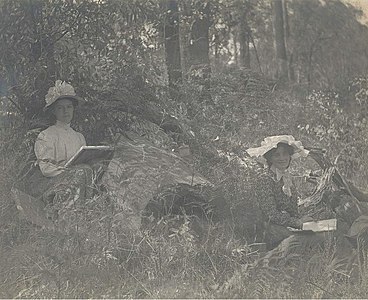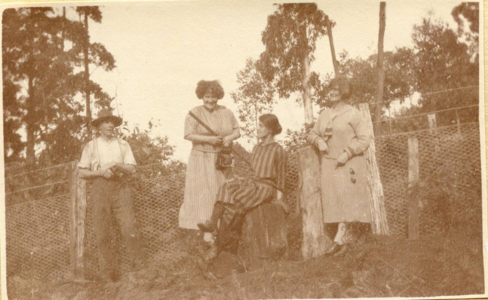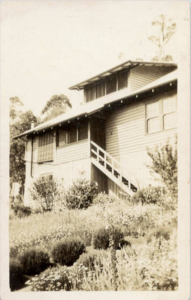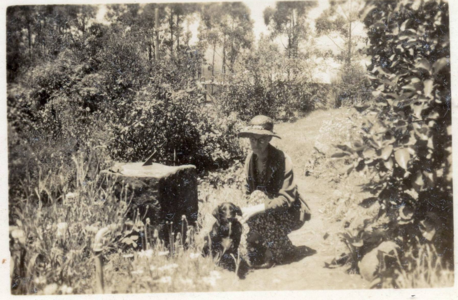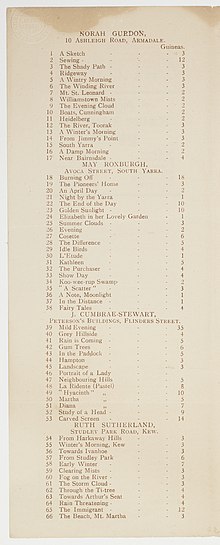
The Athenaeum or Melbourne Athenaeum at 188 Collins Street is an art and cultural hub in the central business district of Melbourne, Victoria, Australia. Founded in 1839, it is the city's oldest cultural institution.

Clarice Marjoribanks Beckett was an Australian artist and a key member of the Australian tonalist movement. Known for her subtle, misty landscapes of Melbourne and its suburbs, Beckett developed a personal style that contributed to the development of modernism in Australia. Disregarded by the art establishment during her lifetime, and largely forgotten in the decades after her death, she is now considered one of Australia's greatest artists.

Violet Helen Evangeline Teague was an Australian artist, noted for her painting, printmaking and her critical writings on art.

Ethel Carrick, later Ethel Carrick Fox was an English Impressionist and Post-Impressionist painter. Much of her career was spent in France and in Australia, where she was associated with the movement known as the Heidelberg School.
Eric Prentice Anchor Thake was an Australian artist, designer, painter, printmaker and war artist.

Dora Lynnell Wilson was a British-born Australian artist, best known in her adopted country of Australia for her etchings and street scenes.

Polly Hurry, was an Australian painter. She was a founding member of the Australian Tonalist movement and part of the Twenty Melbourne Painters Society.

Estelle Mary (Jo) Sweatman (1872-1956), was an Australian painter. She was a founding member of the Twenty Melbourne Painters Society.

Henrietta Maria Gulliver was an Australian artist who specialized in landscape and floral still-life paintings. She was also a florist, horticulturalist and landscape designer.
Ruth Sutherland (1884–1948), was an Australian painter and art critic. She was a founding member of the Twenty Melbourne Painters Society.
Stephanie Taylor (1899–1974) was an Australian artist, printmaker, gallerist, lecturer and art writer and broadcaster. She attained a wide audience in the later 1930s when the Australian Broadcasting Commission featured her art programs on radio stations in Sydney and Canberra as well as her hometown of Melbourne.

Margery Pitt Withers was an Australian artist.

Helen Elizabeth Ogilvie was a twentieth-century Australian artist and gallery director, cartoonist, painter, printmaker and craftworker, best known for her early linocuts and woodcuts, and her later oil paintings of vernacular colonial buildings.
Sedon Galleries was a commercial art gallery in Melbourne, Australia, representing Australian traditional, impressionist and post-impressionist painting and prints. It operated from 1925 to 1959.

Pegg Clarke was an Australian professional fashion, portrait, architectural and society photographer whose work, published frequently in magazines, was referred to by historian Jack Cato as being of "the highest standard."

Arnold Joseph Victor Shore was an Australian painter, teacher and critic.

Allan Holder Jordan (1898–1982) was an Australian painter, designer, printmaker and teacher.
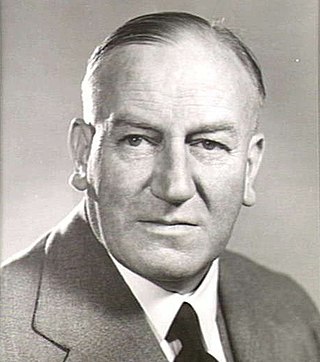
Harold Brocklebank Herbert (1891–1945) was an early 20th century Australian painter and printmaker, an illustrator and cartoonist. A traditionalist, as an art teacher he promoted representational painting, and as a critic was an influential detractor of modernism. He was the first war artist to be appointed for Australia in the Second World War, serving for 6 months with the Australian Infantry Forces in Egypt in 1941 and in the Middle East in 1942.
The Australian Academy of Art was a conservative Australian government-authorised art organisation which operated for ten years between 1937 and 1946 and staged annual exhibitions. Its demise resulted from opposition by Modernist artists, especially those associated with the Contemporary Art Society, though the influence of the Academy continued into the 1960s.

Elma May Victoria Roach, was an Australian modernist painter and woodworker.

